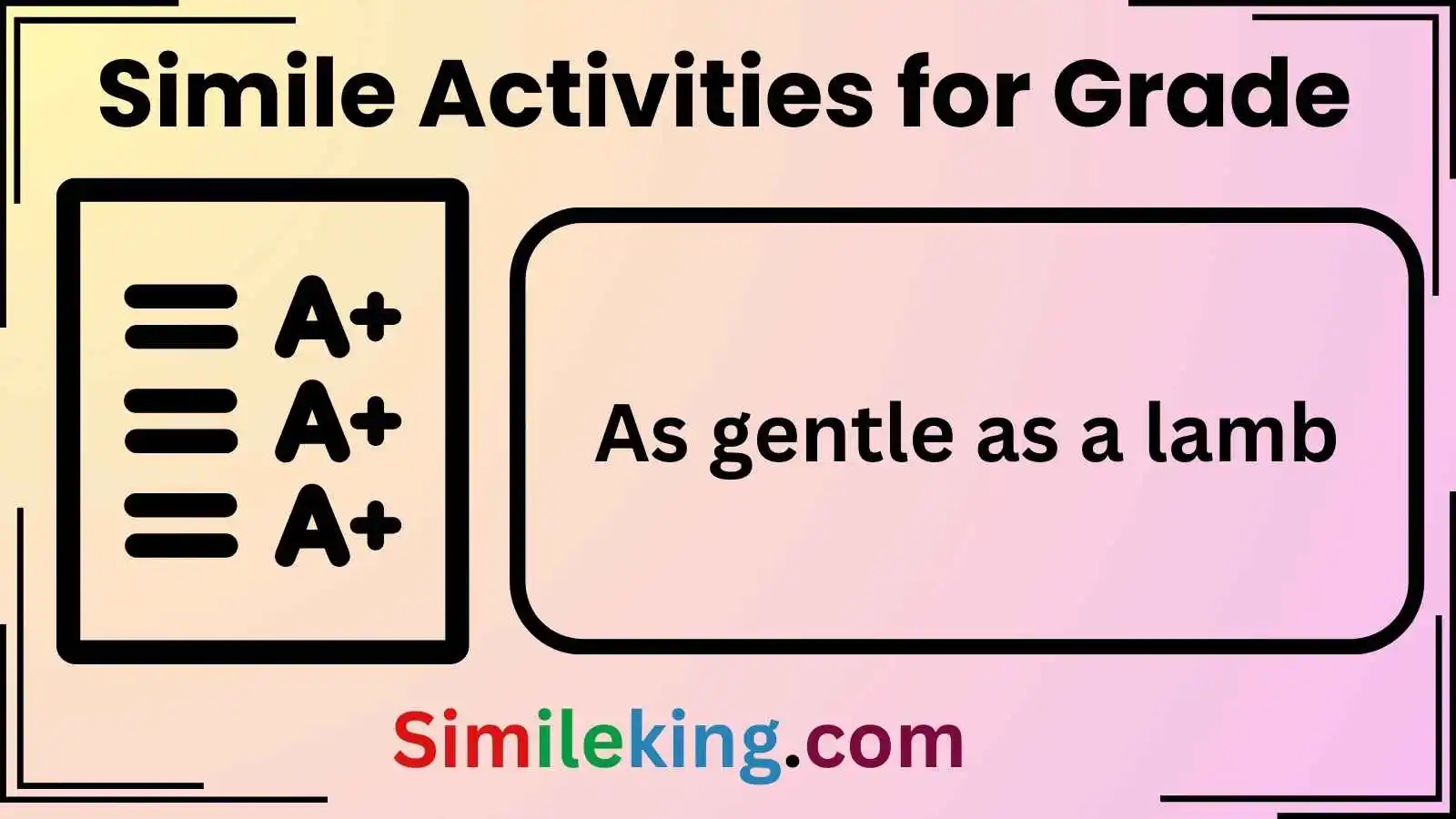Similes are an important part of language development, especially for young learners.
By comparing one thing to another using the words “like” or “as,” similes help children understand language in a more vivid, imaginative way.
For third graders, similes offer a great opportunity to build descriptive language skills and expand their vocabulary.
This article presents a similes worksheet for grade 3, featuring 20+ examples of similes, categorized by various themes, along with activities that can be used to help children practice.
What is a Simile?
A simile is a figure of speech that compares two different things by using the words “like” or “as.” The purpose of a simile is to make descriptions more vivid and relatable. For example, “as brave as a lion” is a simile that compares someone’s courage to a lion’s bravery. Similes are commonly used in both written and spoken language, often to convey emotions, ideas, or attributes in a more creative and engaging manner.
Why Are Similes Important for Grade 3 Students?
By introducing similes in grade 3, students are encouraged to:
- Enhance descriptive writing: Students can use similes to make their writing more interesting and colorful.
- Develop creative thinking: Thinking of new comparisons helps students broaden their imagination.
- Understand metaphorical language: Learning similes is often a stepping stone to understanding other types of figurative language, such as metaphors and idioms.
In this article, we’ll explore a worksheet filled with similes tailored for third-grade learners, offering various examples and activities.
20+ Similes for Grade 3
1. Similes for Describing People
These similes are perfect for describing characteristics of people, from their appearance to their personality.
- As brave as a lion
- As strong as an ox
- As busy as a bee
- As wise as an owl
- As gentle as a lamb
- As proud as a peacock
- As quiet as a mouse
- As stubborn as a mule
- As clever as a fox
2. Similes for Describing Animals
Students can also use similes to describe animals and their behaviors.
- As slow as a turtle
- As fast as a cheetah
- As graceful as a swan
- As fierce as a tiger
- As free as a bird
- As playful as a kitten
- As loyal as a dog
- As sly as a fox
3. Similes for Describing Objects
Sometimes, similes help to bring everyday objects to life by making them seem more vivid.
- As shiny as a new penny
- As smooth as glass
- As bright as a star
- As soft as cotton
- As hard as a rock
- As light as a feather
- As heavy as lead
- As clear as crystal
4. Similes for Describing Weather
Similes can also help students describe different weather conditions, adding flair to their writing.
- As hot as an oven
- As cold as ice
- As rainy as a monsoon
- As windy as a hurricane
- As dark as a stormy night
- As sunny as a summer day
5. Similes for Describing Emotions
When students explore feelings, similes provide a creative way to describe emotions.
- As happy as a clam
- As sad as a rainy day
- As mad as a hornet
- As excited as a puppy
- As nervous as a cat in a room full of dogs
- As scared as a deer in headlights
6. Similes for Describing Speed
These similes can help students understand the concept of speed or how fast something is.
- As fast as lightning
- As quick as a flash
- As slow as molasses
- As swift as an arrow
7. Similes for Describing Size and Shape
Students can use these similes when talking about the size or shape of objects.
- As big as a house
- As small as a pin
- As round as a ball
- As tall as a giraffe
- As flat as a pancake
Activities for Practicing Similes
To help third graders practice using similes, here are a few engaging activities:
1. Fill-in-the-Blanks Exercise
Provide students with sentences where they can fill in the blanks with the appropriate simile. For example:
- “She was as ____ as a lion during the competition.”
- “The water was as ____ as glass on the lake.”
2. Simile Match-Up
Create a list of incomplete similes and a separate list of possible endings. Ask students to match them correctly. For example:
- As cold as ____ — (ice)
- As busy as ____ — (a bee)
- As light as ____ — (a feather)
3. Create Your Own Simile
Encourage students to come up with their own unique similes by using the structure “as ____(adjective) as ____.” For example:
- “as quiet as a sleeping baby”
- “as bright as the sun”
4. Simile Art
Ask students to draw pictures that represent the similes they are learning. For example, if a student picks “as fast as lightning,” they could draw a lightning bolt.
5. Simile Scavenger Hunt
Have students go around the classroom or at home and find objects that match a simile. For example, they might find something that is “as soft as cotton” or “as shiny as a new penny.”
Conclusion
Similes are a fun and effective way for third-grade students to build their language and creative writing skills. By incorporating similes into their vocabulary, students can better describe the world around them, making their writing more engaging and colorful. With over 20 examples of similes in various categories, this worksheet serves as a useful resource for teaching similes and allowing students to practice using them in different contexts. The activities included provide fun and interactive ways for students to further their understanding and become more confident in using similes in both writing and spea





